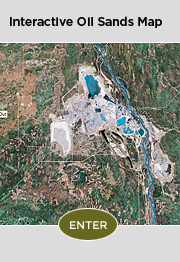The Current Situation
Fact: The population of Fort McMurray and the Wood Buffalo Region has grown substantially and quickly.
- The Regional Municipality of Wood Buffalo is the largest municipality in Canada. At more than 68,000 square kilometres in size, it is larger than the province of Nova Scotia.
- Fort McMurray and Saprae Creek’s permanent population has doubled over the last decade to approximately 73,227.
- In 2011, the region has hosted over 30,185 mobile workers in camps and lodges which are located close to oil sands projects throughout the municipality.
Fact: The region is connected by two highways, a railway and air service.
- Fort McMurray is accessible via Highway 63, a single-lane highway with some twinned sections and Highway 881, a single-lane highway with no twinned sections.
- A freight rail service extends from Edmonton to the Lynton rail yard south of Fort McMurray. The oil sands projects north of Fort McMurray and many to the south are not connected to the line. Goods sent to and from the Lynton yard must be unloaded and trucked.
- Fort McMurray is serviced by a municipal airport located 16 kilometres south of the city that accommodates commercial and private flights.
- Some OSDG member companies have private airstrips to service their workforce needs.
- Highway 63 is the main highway used to travel the 450 kilometres from Edmonton to Fort McMurray.
- Highway 881 can be considered an alternate route to Edmonton and other northeastern Alberta communities such as Lac La Biche, St. Paul and Cold Lake.
- Highway 881 is used less than Highway 63 but is an important connector to communities such as Anzac, Janvier and Conklin which are located close to current and future in-situ oil sands projects.
Fact: There are extraordinarily heavy transportation loads and traffic volumes in the region.
- Highway 63 carries the highest tonnage per kilometre in the country.
- Highway 63 accommodates the largest and heaviest loads ever carried on highways anywhere in the world.
- Tens of thousands of residents and workers use Highway 63 and 881 to move between work sites and communities.
- Many workers commute regularly to the region from locations across Canada.
Fact: Transportation priorities have been identified and are being addressed.
- Improved traffic flow in and around the Wood Buffalo Region is considered a high priority by residents, industry and governments. Easing mobility in the region improves quality of life and the efficiency of oil sands development.
- Alberta Transportation has announced approximately $1 billion in funding for future transportation projects in the region and is executing an additional $600 million in current transportation projects.
- Several oil sands developers are investing millions in coordination with the Government of Alberta to better link public and private roadways to improve safety and efficiency.
- Several companies have also invested millions on private aerodromes and airstrips to provide workers with safer and easier access to remote work sites.
Facts sourced by Oil Sands Developers Group (October 2009).
Sources for all facts available upon request.




















